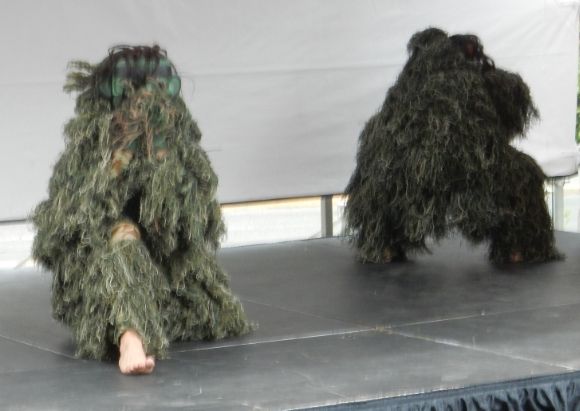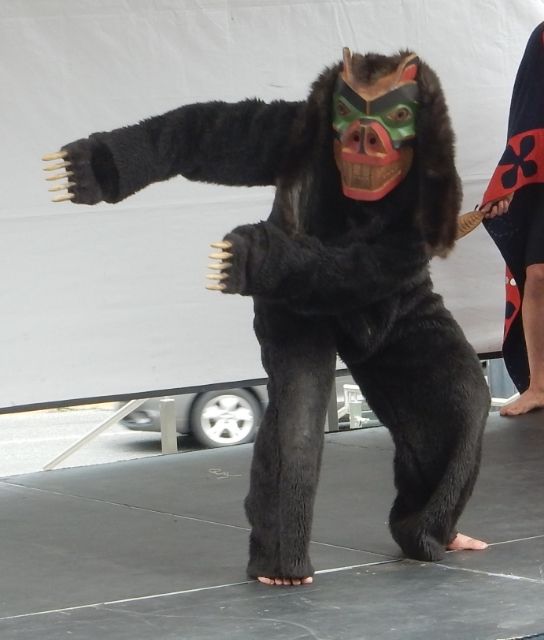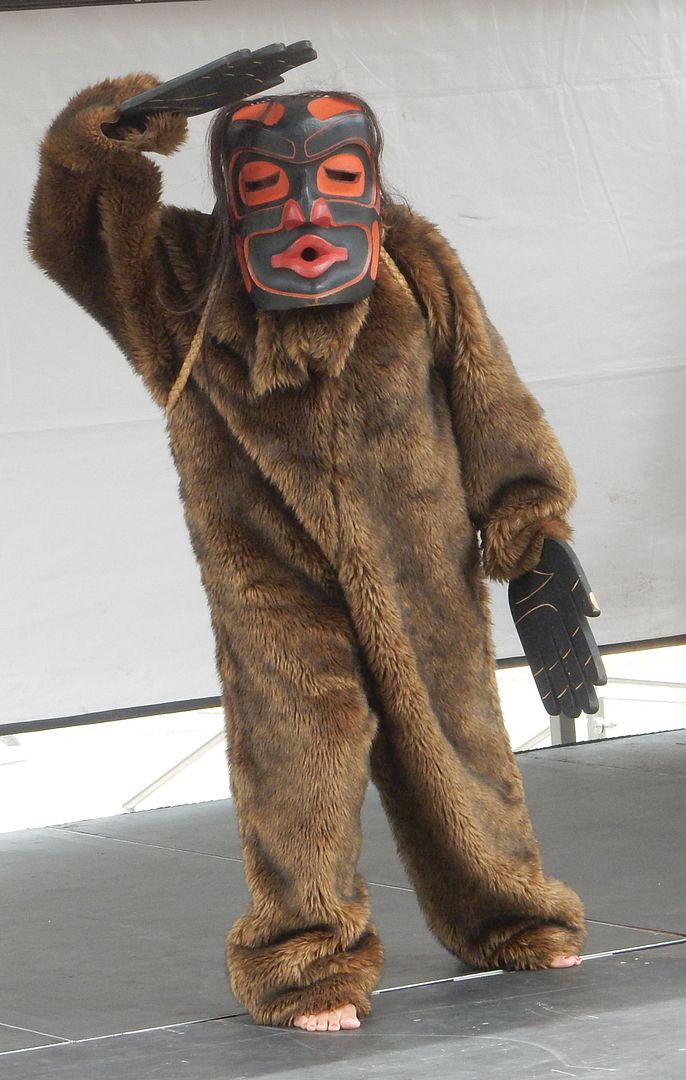The mythologies of many American Indian religious traditions include stories of supernatural entities. When Europeans encountered these stories, they interpreted them through a filter of Greek, Roman, and Norse mythology and assumed that these supernatural entities were gods in the same manner as the polytheistic traditions of ancient European civilizations. These European gods were basically humans with supernatural powers. In most cases, however, the American Indian supernatural entities were based on an animistic worldview rather than a polytheistic theology. Unlike the Greek and Roman gods, these supernatural entities were not gods, were not worshipped, had no temples, and there were no priests who interpreted their actions. While the early European explorers and Christian missionaries describe these supernatural entities as gods, they are not gods in the sense of the ancient gods of Europe.
The oral traditions of the many different American Indian cultures include stories about supernatural entities—culture heroes who have given cultural traditions to the people, tricksters who made mistakes, and many others. In their book Mythology of the American Nations, David Jones and Brian Molyneaux report:
“Culture heroes are supernatural beings who inhabited the earth throughout the mythic age.”
They also report:
“A supernatural being is heroic when involved in the tasks that define the culture to come, but a trickster when subject to baser human desires.”
The trickster stories told in many American Indian traditions often confused and shocked the Europeans. Folklorist George Lankford, in his book Native American Legends: Southeastern Legends: Tales from the Natchez, Caddo, Biloxi, Chickasaw, and Other Nations, writes:
“For the Euro-American, the trickster tale is probably the most confusing kind of oral tradition to comprehend.”
The stories sometimes involved subjects which are taboo to Europeans, such as sexual intercourse, defecation, passing gas, incest, genitalia, and so on. Anthropologist Samuel Wilson, in his book The Emperor’s Giraffe and Other Stories of Cultures in Contact, writes:
“Trickster tales often serve to entertain and instruct children, teaching them how to behave and how the world works. In Native Americans stories, as elsewhere, the trickster is often the underdog, never the most powerful or beautiful animal. The trickster is the one who through cleverness defeats more powerful forces, using their very superiority, arrogance, or vanity as a weapon against them.”
Historian Ron McCoy, in an article in American Indian Art, writes of the Trickster:
“For agricultural people he usually wears the mask of the fool, someone whose principal role appears to be to serve as an object of ridicule. But for those living closer to the hunting tradition—the Lakota, for example—he is significantly more complex, an entity who may play the dupe but who is also able to command real power.”
For many Plains Indian tribes, Coyote is the Trickster, while in the Southeast, Rabbit (often called Brer Rabbit) serves in this role, and among the Indian nations of the Northwest Coast, Raven is often Trickster. Among the Northwest Coast Tsimshian peoples, Raven is a trickster and shape-changer who brought the people fire and the eulachon rake. Farther south on the Pacific coast, Quileute mythology portrays Blue Jay as a trickster.
The stories of supernatural entities were not just told in stories, but they were also acted out in ceremonies and pilgrimages. Shown below are some contemporary photographs of the the Spakwus Slolem (“Eagle Song Dancers”) performing Squamish dances showing some of the mythological beings.



Over the past two centuries, a number of American Indian writers have written down the traditional stories of their different tribal traditions. Publishing these stories, however, has sometimes been problematic as non-Indian editors and publishers have chosen to make the stories more suitable for non-Indian audiences. One example of this can be seen in the work of Salish author Mourning Dove (Christine Quintasket). In 1933 her second book, Coyote Stories, was published. This is a collection of traditional Okanogan stories. However, working with an editor who was primarily concerned with reaching a non-Indian audience, these stories are presented in a fashion that would be acceptable for this audience. Thus, stories about incest, transvestism, and infanticide were omitted from the collection. The alterations in the stories to make them appeal to a non-Indian audience often makes them unrecognizable to the traditional Okanogan from which they came.
The supernatural beings among many of the tribal traditions include the little people (dwarves) and the giants. Among the Seneca, the little people—Djigaahehwa—are responsible for the healthy and peaceful growth of medicinal plants. Among the Crow on the Northern Plains there are little people who live in the mountains and often help the people. When the people were facing a difficult journey, they would often leave offers of beads for the Little People. During the vision quest, the Little People might appear and give the seeker certain medicines. When a Crow woman was pregnant and desired to know the sex of her child, she would leave two toys—one for a boy and one for a girl—for the Little People at a site near Pryor Creek. The next morning there would be only one toy left and this would indicate the baby’s sex.
Cree writer Alfred Young Man, in his essay in Eating Fire, Tasting Blood: An Anthology of the American Indian Holocaust, reports:
“Cree have always spoken of the little people, sometimes with wonder, sometimes with certain fear.”
Alfred Young Man remembers:
“One of my earliest childhood memories growing up on the Blackfeet Reservation in Montana was seeing an impish elf one morning just after daybreak. I unexpectedly caught the little character peeking around a blanket my mother had hung over the bedroom door, used as a divider between that room and the next. I was about three or four years old, lying in bed, wide-awake, when that little person, less than a foot tall, appeared, flashing a mischievous grin. He had pointed ears, red hair, wore a little green Robin Hood-style hat, had rosy cheeks, an oval face, and big green eyes.”
The Little People, like the Giants, are an important element in the religious mythology of the Ojibwa (Anishinaabe). In their book Mythology of American Nations, David Jones and Brian Molyneaux report:
“Ojibway travellers may see little people (the Maymaygwaysiwuk) paddling their stone canoes or playing along cliffs. They live in the rocks and come and go through crevices, and one must always be on guard for them.”
In the Plateau area there are many stories about the giants. With regard to the Kootenai, ethnographer H.H. Turney-High, in his book Ethnography of the Kutenai, reports:
“Giants are completely covered with hair and give off an offensive smell like burning wool. They live entirely in caves and may still be encountered.”
In some traditions, the stories are set in the mythic era before humans, an era in which animals could talk. Some of the stories are told just for fun, to amuse audiences and reinforce cultural traditions. Others provided the people with a cognitive map of the geographical territory of the people. David Jones and Brian Molyneaux report:
“The heroic events of creation and transformation do not depend only on the recollection of ancient traditions. They live on in the shape of the land itself: every towering rock or twist in a river records the acts of the culture heroes who changed the earth as they lived on it.”
In his chapter in North American Exploration. Volume 3: A Continent Comprehended, William Goetzmann puts it this way:
“In fact, most tribal legends among both American and Canadian native peoples incorporated knowledge, myth, and lore of extensive travel.”
By being familiar with the stories, people are able to travel into areas unknown to them but known by their ancestors and know the distinctive geographic features which they will encounter.
It is important to realize that there is no single American Indian mythology: each of the hundreds of North American Indian cultures has its own mythologies, its own culture heroes, its own supernatural entities. It is also important to realize that mythology is dynamic, it changes through time to meet the needs of the people. Writing about the Flathead Indians in Montana, Richard Forbis, in his University of Montana M.A. thesis, writes:
“Often, Flathead mythology has been combined with mythology in our culture so that the essence of the story is European or African, while the characters acting the parts are the traditional Indian players—Coyote, Wolf, Rabbit, Bear, Beaver, and multitudes of others.”
Indians 101
Twice each week Indians 101 explores various American Indian topics. More about American Indian religions from this series:
Indians 101: A very short overview of the Northern Plains Sun Dance
Indians 201: Sacred Places in the Great Basin
Indians 301: Smohalla's Dreamer Religion
Indians 101: Some Pawnee Ceremonies
Indians 101: American Indian religions 150 years ago, 1870
Indians 101: The Southern Plains Vision Quest
Indians 101: Supernatural Entities Among the Eastern Algonquian Tribes
Note: today’s essay is from my new book Sacred Things: American Indian Religions